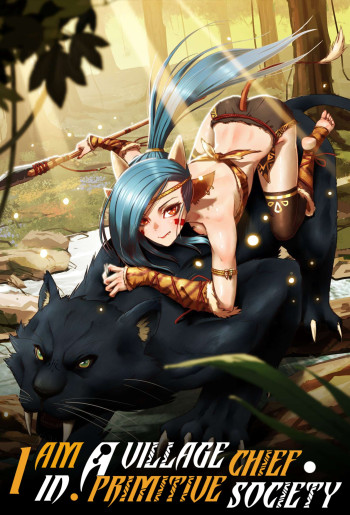Summary

A Boss to Love and Hate
by Norah C. Peters
ulie has to ignore her physical attraction to her new boss but this is made easier by his bad tempered and unreasonable work demands. He`s good looking but angry, smart but over bearing and most all of she finds him infuriating.
However after working closely together on a project Julie sees a different side to Max and she`s blown away by his confession.
.
Read
A Boss to Love and Hate on http://kissnovel.net
Martial Peak Reviews
A Boss to Love and Hate by Norah C. Peters is a captivating contemporary romance that delves into the complexities of workplace relationships, personal growth, and the transformative power of understanding. The story centers around Julie, a young professional who finds herself navigating the tumultuous waters of attraction and animosity with her new boss, Max. From the outset, Peters skillfully sets the stage for a classic enemies-to-lovers narrative, but what unfolds is a rich tapestry of character development and emotional depth that elevates the story beyond mere romantic tropes.
The blurb succinctly captures the initial tension between Julie and Max. Julie is determined to suppress her physical attraction to her boss, a task made increasingly difficult by Max's volatile temperament and unreasonable demands. Peters does an excellent job of portraying Max as a multifaceted character; he is not merely the archetypal "bad boy" boss but rather a complex individual grappling with his own demons. His anger and overbearing nature serve as a defense mechanism, a barrier that Julie must navigate to uncover the man beneath the surface.
One of the most compelling themes in the book is the idea of perception versus reality. Initially, Julie views Max through a lens of frustration and resentment, but as they work closely together on a project, her perspective begins to shift. This transformation is not instantaneous; it is a gradual process that Peters handles with finesse. The author skillfully illustrates how understanding and empathy can reshape our views of others, allowing for deeper connections to form. This theme resonates with readers, reminding us that first impressions can often be misleading.
Character development is a strong suit of Peters' writing. Julie is portrayed as a relatable protagonist, grappling with her feelings while striving to maintain professionalism in a challenging work environment. Her internal conflict is palpable; she is torn between her growing attraction to Max and her desire to remain focused on her career. This struggle is depicted with authenticity, making Julie a character that readers can root for. As she learns more about Max's vulnerabilities, her character evolves, showcasing her strength and resilience.
Max, on the other hand, is a character that invites both sympathy and frustration. His bad temper and unreasonable demands initially paint him as a villain in Julie's story. However, as the narrative unfolds, we are given glimpses into his past, revealing the reasons behind his behavior. Peters does an admirable job of balancing Max's flaws with moments of vulnerability, making him a more sympathetic character. His confession to Julie serves as a pivotal moment in the story, allowing readers to see the depth of his character and the potential for growth and redemption.
The romance between Julie and Max is built on a foundation of tension and conflict, which Peters masterfully escalates throughout the narrative. The chemistry between the two characters is palpable, and their interactions are charged with a mix of frustration and attraction. Peters captures the essence of the enemies-to-lovers trope beautifully, using witty banter and heated exchanges to create a dynamic that keeps readers engaged. The slow burn of their relationship is satisfying, as it allows for genuine emotional connections to develop alongside the physical attraction.
Another noteworthy aspect of the book is its exploration of workplace dynamics. Peters does not shy away from addressing the challenges that arise in a professional setting, particularly when personal feelings come into play. The tension between maintaining professionalism and succumbing to personal desires is a relatable struggle for many readers, adding an extra layer of realism to the story. The author also touches on themes of power dynamics and the complexities of authority, making the romance not just a personal journey but also a commentary on the intricacies of modern workplace relationships.
In terms of pacing, Peters strikes a commendable balance between character development and plot progression. The story unfolds at a steady pace, allowing readers to fully immerse themselves in Julie and Max's journey. The tension builds gradually, leading to a satisfying climax that feels earned rather than rushed. The resolution of their relationship is both heartwarming and realistic, leaving readers with a sense of closure while also hinting at the potential for future growth.
Comparatively, A Boss to Love and Hate shares thematic similarities with other contemporary romances, such as The Hating Game by Sally Thorne and Beautiful Disaster by Jamie McGuire. However, Peters distinguishes her work through the depth of her characters and the nuanced exploration of their emotional landscapes. While the enemies-to-lovers trope is a familiar one, Peters breathes new life into it by focusing on the characters' internal struggles and the evolution of their relationship.
Overall, Norah C. Peters' A Boss to Love and Hate is a delightful read that combines humor, tension, and emotional depth. The characters are well-developed, the romance is engaging, and the themes of understanding and personal growth resonate long after the last page is turned. This book is a testament to the idea that love can often be found in the most unexpected places, and that sometimes, the person we think we hate the most can become the one we love the deepest. For readers seeking a contemporary romance that offers both heart and substance, this book is a must-read.
























Reviews 0
Post a Reviews: